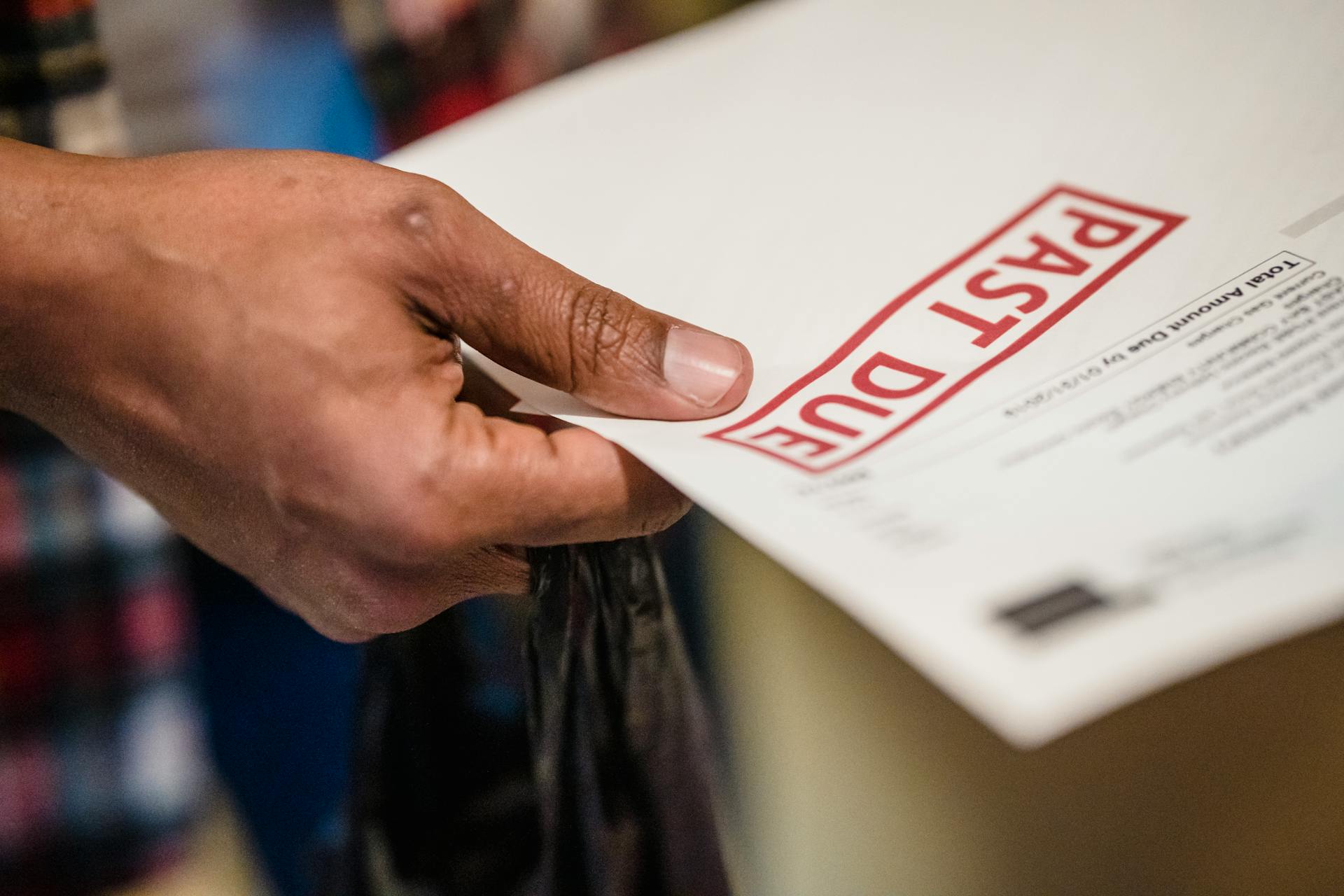
A temporary authorization hold is a common practice in the payment industry, but it can be confusing if you're not familiar with the process.
In the United States, a temporary authorization hold is typically initiated by merchants when a customer's payment card is declined or when a transaction exceeds a certain amount.
This hold can last anywhere from a few days to several weeks, depending on the merchant's policies and the type of card being used.
A temporary authorization hold is not a freeze on your account, but rather a temporary hold on a specific amount of funds until the merchant confirms the transaction.
What Is Authorization?
An authorization hold is a temporary hold placed on funds in a bank account or credit card limit.
It's used by sellers to verify a payment method and ensure that sufficient funds or credit are available to cover a transaction. Authorization holds are commonly encountered in various scenarios, including hotel bookings, rental car reservations, online purchases, and restaurant tabs.

A merchant sends a request to the payment processor or bank to verify if the customer’s account or card has the necessary funds or credit, and the payment processor or bank places an authorization hold on the specified amount.
The authorized amount may differ from the final transaction amount, and in some cases, an additional amount may be temporarily authorized to account for potential tips or variable charges.
The actual charge or transfer of funds does not occur until the merchant captures the payment, typically when the goods are shipped, or the service is provided, and the final charge replaces the authorization hold.
Why Use Authorization?
An authorization hold is designed to slow a transaction down long enough to verify everything is as it should be before funds are exchanged.
Using authorization holds is beneficial for both you and your customers because it helps secure payment without immediately drawing funds from the customer's account.
Imposing an authorization hold allows for adjustments and provides transparency throughout the transaction process.
It helps prevent unauthorized transactions and gives you time to verify the customer's account information.
This process also gives you an opportunity to make adjustments if something goes wrong during the transaction.
How to Use Authorization
Authorization holds help mitigate the risk of fraudulent transactions by verifying the validity of a customer's payment method and ensuring sufficient funds or credit.
To use authorization effectively, merchants can detect potentially fraudulent activities before completing a transaction, reducing the chances of accepting payments from stolen cards or unauthorized users.
Authorization holds also act as effective chargeback prevention by confirming that the customer's payment method is valid and has adequate funds, providing evidence of customer consent and reducing the likelihood of chargebacks caused by claims of unauthorized or fraudulent transactions.
Process
The process of authorization holds is fascinating. It starts with a merchant initiating an authorization request when a customer makes a purchase using a credit card. The request is sent to the acquiring bank or payment processor to verify the card's validity and the availability of funds.
The acquiring bank or payment processor then places a temporary hold on the customer's available credit or funds, usually equal to the total transaction value or an estimated amount based on the merchant's request. This hold is typically done to ensure that the funds are set aside for the transaction and unavailable for other purchases.
A debit card works differently, with the available balance immediately decreasing when a purchase is made, as a hold is enacted on the amount spent. However, the actual balance with the bank remains the same, as the merchant has not actually collected the funds in question.
Here's a breakdown of the process:
- Authorization Request: The merchant initiates an authorization request when a customer makes a purchase using a credit card.
- Hold Placement: The acquiring bank or payment processor places a temporary hold on the customer's available credit or funds.
- Funds Reservation: The held amount is reserved for the merchant, reducing the customer's available credit limit or temporarily freezing the corresponding funds in their bank account.
- Transaction Completion: The merchant proceeds to fulfill the transaction by delivering the goods or services to the customer.
- Capture or Settlement: Once the transaction is completed, the merchant captures or settles the authorized funds, converting the authorization hold into an actual charge.
- Hold Release: If the transaction is canceled, refunded, or not completed within a specified timeframe, the authorization hold is released, and the held funds become available again to the customer.
- Hold Expiration: In some cases, if a hold is not captured or released within a certain timeframe, it may expire automatically, releasing the held funds back to the customer.
Authorization holds can be implemented instantly, and once the merchant completes the transaction, they will receive the funds on the same or the following day. However, the time limit for an authorization hold depends on different factors, including the merchant category code, card network, and type of payment card used.
For Differing Amounts
Temporary authorization holds can reduce available credit or freeze a portion of the funds on the card, regardless of the amount.
If a $100 authorization hold is placed, the available credit will be reduced by $100 until the hold is released or expires.
Authorization holds can limit a customer's purchasing power since the held amount is deducted from their available balance or credit limit, no matter the size of the hold.
The held amount is temporarily frozen or set aside from the available balance on the credit card, meaning the customer can't use those funds for other purchases or transactions until the hold is released or expires.
A merchant can use an authorization hold to ensure they get paid for purchases made via credit or debit card, locking in the funds they're owed until the transaction is settled and the bank transfers the funds to the merchant's bank.
5 Short Durations
Avoid unnecessarily long hold durations.
Once the transaction is complete, release the hold as soon as possible.
This is especially important because the buyer may get antsy and call the bank for a chargeback if the hold is left on too long.
Release the hold as soon as it's clear that the hold amount will not be needed.
Potential Issues with Authorization
Authorization holds can go wrong, causing complications for both merchants and consumers. These issues can arise from mismanaged or improperly deployed holds.
Double charging can occur when a hold doesn't release promptly after the final charge processes, appearing as if the customer has been charged twice. This situation can cause distress and inconvenience, requiring intervention to resolve.
Miscommunication can lead to misunderstandings about the authorization hold process. Consumers might not realize a hold has been placed on their funds, leading to unexpected account balances and potential overdrafts or declined transactions.
Hold amount misestimation can also pose problems, with overestimation unnecessarily tying up consumer funds and underestimation risking service denial or complications in the payment process.
Here are some common issues with authorization holds:
Can Go Wrong?
Authorization holds can go wrong in various ways, causing inconvenience to both merchants and customers. Temporary funds hold is one of the cons of authorization holds, where funds in a customer's account or credit limit are tied up for a certain period, limiting their availability for other purchases or transactions.
A hold amount misestimation can also occur, where the estimated amount is either too high or too low. Overestimation may unnecessarily tie up consumer funds, while underestimation could lead to insufficient funds when the actual charge is processed, risking service denial or complications in the payment process.
Technical failures can result in holds not being placed or released correctly, disrupting the smooth operation of financial transactions and affecting trust and satisfaction levels. This can happen due to failures in payment processing systems.
Double charging can occur when a hold does not release promptly after the final charge processes, appearing as if the customer has been charged twice. This situation can cause distress and inconvenience, requiring intervention to resolve.
Some common issues with authorization holds include:
- Temporary funds hold
- Hold amount misestimation
- Technical failures
- Double charging
Avoiding excessive hold amounts is crucial to prevent potential financial hardships for customers. Never place holds for amounts significantly higher than the expected transaction value, as this can lead to customer dissatisfaction and potentially result in a cancellation or refund.
Miscommunication
Miscommunication can lead to a lot of problems. Lack of clear communication about the authorization hold process can cause misunderstandings.
Consumers might not realize a hold has been placed on their funds, leading to unexpected account balances. This can result in overdrafts or declined transactions for other purchases.
A clear explanation of the hold process can help prevent these issues.
Regulatory & Compliance
Regulatory bodies govern the use of temporary authorization holds, and non-compliance can lead to legal issues, fines, and damage to reputation.
In some jurisdictions, strict regulations dictate the duration and amount of authorization holds. Awareness of these potential complications is essential for smooth financial transactions.
Be aware of, and compliant with, all relevant regulations and card network rules regarding temporary authorization holds. This includes rules around the duration of holds and conditions under which they can be used.
Non-compliance can have serious consequences, including legal issues and fines. It's crucial to be aware of the regulations and card network rules to avoid these risks.
Best Practices for Authorization
Implementing authorization holds requires a balance between safeguarding your business's financial interests and ensuring a positive customer experience.
To navigate this balance, follow best practices such as deploying authorization holds effectively. This involves considering both sides of the equation.
Authorization holds should be implemented in a way that doesn't disrupt the customer's experience. This means setting holds that are reasonable and don't overly restrict their spending.
Regularly reviewing and adjusting authorization holds can help ensure they're working effectively. This might involve re-evaluating the hold amounts or frequencies.
By following these best practices, you can strike a balance between protecting your business and providing a good customer experience.
Impact on Credit Cards
Temporary authorization holds can have a significant impact on credit card limits and available balances. The held amount is deducted from the available credit limit, reducing the customer's purchasing power.
For example, if a $100 authorization hold is placed, the available credit will be reduced by $100 until the hold is released or expires. This means the customer can't use those funds for other purchases or transactions until the hold is released or expires.
Authorization holds can temporarily freeze a portion of the funds on the credit card, reducing the available balance. This is especially true for credit card transactions, which can have hold times of up to 31 days.
The funds corresponding to the authorization hold are set aside from the available balance on the credit card. This is why it's essential to consider the potential impact of authorization holds when planning for other purchases or managing credit card usage.
Here are some examples of authorization hold limits based on the type of transaction, as outlined by Visa:
Once the authorized transaction is completed, and the merchant captures the funds, or if the hold expires due to time limits, the held amount is released. This increases the available credit and restores the funds to the available balance on the credit card.
Authorization Pros and Cons
Authorization holds can be a double-edged sword for both merchants and customers. Here are the key pros and cons to consider.

Authorization Holds: The Good
Authorization holds can provide a sense of security for customers, knowing that their payment method has been verified and is ready for a transaction. This can lead to increased confidence in the transaction and the merchant.
By placing an authorization hold, merchants can verify the validity of a payment method and ensure sufficient funds or credit are available before completing a transaction. This helps prevent fraudulent transactions and reduces the likelihood of chargebacks.
Authorization holds also help merchants manage inventory and allocate resources, ensuring that goods or services are available for customers who have committed to a purchase.
Authorization Holds: The Not-So-Good
Temporary authorization holds can tie up funds in a customer's account or credit limit for a certain period, limiting their availability for other purchases or transactions. This can be frustrating for customers who need access to those funds.
The duration of authorization holds can vary depending on the merchant, payment processor, and type of transaction, making it difficult for customers to predict when funds will be released.
Guaranteeing Payment
Guaranteeing payment is a crucial aspect of any transaction. This is where authorization holds come into play, verifying the availability of funds or credit on a customer's payment method before completing a transaction.
By obtaining authorization, the merchant confirms that the customer has explicitly authorized the transaction and intends to make the purchase. This commitment from the customer reduces the likelihood of non-payment or cancellations.
Authorization holds act as a financial guarantee, verifying the availability of funds and securing payment before completing the transaction. This helps protect the merchant's revenue and cash flow.
A temporary authorization ensures that the funds are taken from the buyer and held until the transaction is complete. Once the transaction is complete, the funds are automatically released to the merchant, ensuring payment.
Authorization Pros and Cons
Authorization holds can be a double-edged sword for both merchants and customers. They offer several benefits, but also come with some drawbacks.

Authorization holds can verify the validity of a payment method and ensure sufficient funds or credit are available before completing a transaction. This helps merchants avoid chargebacks and reduces the risk of fraudulent transactions.
Fraud prevention is another significant advantage of authorization holds. By placing an authorization hold, merchants can mitigate the risk of fraudulent transactions and reduce the likelihood of chargebacks.
Authorization holds also help merchants manage inventory and allocate resources, ensuring that goods or services are available for customers who have committed to a purchase. This is especially important for businesses with limited stock or high-demand products.
Customers often feel more secure knowing that their payment method has been authorized, leading to increased confidence in the transaction and the merchant. This can lead to a more positive customer experience and increased loyalty.
Here are the key pros of authorization holds:
- Verification: Authorization allows merchants to verify the validity of a payment method and ensure sufficient funds or credit are available before completing a transaction.
- Fraud prevention: By placing an authorization hold, merchants can mitigate the risk of fraudulent transactions and reduce the likelihood of chargebacks.
- Resource allocation: Authorization holds help merchants manage inventory and allocate resources, ensuring that goods or services are available for customers who have committed to a purchase.
- Customer trust: Customers often feel more secure knowing that their payment method has been authorized, leading to increased confidence in the transaction and the merchant.
- Speedier transactions: Once an authorization hold is placed, the subsequent payment capture can be processed quickly, reducing checkout time and improving the overall customer experience.
However, authorization holds also have some downsides. Temporary funds holds can tie up funds in a customer's account or credit limit for a certain period, limiting their availability for other purchases or transactions.
Customers may be unaware of authorization holds and may mistakenly assume that the held amount has been charged, leading to confusion or frustration. This can lead to a negative customer experience and decreased loyalty.
The duration of authorization holds can vary depending on the merchant, payment processor, and type of transaction, making it difficult for customers to predict when funds will be released. This can cause delays in funds becoming available again to the customer.
Here are the key cons of authorization holds:
- Temporary funds hold: Authorization holds can tie up funds in a customer’s account or credit limit for a certain period, limiting their availability for other purchases or transactions.
- Potential for confusion: Customers may be unaware of authorization holds and may mistakenly assume that the held amount has been charged, leading to confusion or frustration.
- Overlooked release of holds: Sometimes, authorization holds are not released promptly by the issuing bank or payment processor, causing delays in funds becoming available again to the customer.
- Varied hold durations: The duration of authorization holds can vary depending on the merchant, payment processor, and type of transaction, making it difficult for customers to predict when funds will be released.
- Inaccurate hold amounts: Occasionally, authorization holds may be placed for higher amounts than the actual transaction, causing temporary discrepancies between the held amount and the final charge.
General Information
A temporary authorization hold is a common practice in the payment processing industry. It's a way for merchants to ensure that a customer's credit card has sufficient funds to cover a transaction.
Authorization holds are typically placed on a customer's credit card account for a specific amount, usually equal to the anticipated transaction value. This amount is "held" until the transaction is completed or canceled. Merchants want to minimize financial inconvenience to customers, so they finalize transactions promptly to release any excess held funds back to the customer's account.
Here are some key things to know about authorization holds:
- Understand the policies and guidelines of your payment processor regarding authorization holds.
- Set clear policies and communicate them to your customers.
- Obtain explicit customer consent for authorization holds during the checkout process.
- Specify hold amounts accurately.
- Monitor hold expiration dates and time limits.
- Provide clear information to customers about the hold process.
- Train staff on hold procedures.
- Regularly review and adjust policies to ensure they align with industry best practices.
What You Need to Know
Authorization holds are a standard procedure in the payment processing industry, and understanding how they work can help you navigate transactions smoothly.
An authorization hold can be implemented instantly, and the funds are typically held for a specific period before being released back to the customer.
The time limit for an authorization hold varies depending on the type of transaction, the card network, and the merchant category code (MCC). For example, most card-present transactions have a hold limit of one day, while card-not-present transactions have a hold limit of seven days.
Here's a breakdown of the typical hold limits for different types of transactions:
If a hold is not captured or released within a certain timeframe, it may expire automatically, and the held funds are released back to the customer.
It's essential to understand that authorization holds can be a source of confusion for both merchants and customers. By being aware of the hold limits and procedures, you can minimize any financial inconvenience and ensure a smoother payment process.
Technical Support & Backup
Having a reliable technical support system in place is crucial for managing system failures that can affect authorization holds. This can help prevent disruptions to your business.
Authorization holds can be a valuable tool for managing financial risks, but they require careful planning and execution to avoid impacting customer relationships.
Your business can use authorization holds to maintain a balance between financial security and customer satisfaction. By having a backup plan in place, you can minimize the risk of system failures and ensure that your customers continue to receive the service they need.
Industry-Specific Information
Temporary authorization holds are used in various industries, each with its own unique requirements. Car rental companies, for example, use authorization holds to secure a deposit covering the estimated rental charge.
This deposit also covers potential damages to the vehicle, which can add up quickly. Car rental companies may charge extra for late returns, fuel replacement, or damage repairs.
Some businesses may use temporary authorization holds as a way to protect themselves from potential losses, while others may use them to ensure timely payment for services rendered.
Car Rentals
Car Rentals are a great way to get around, but did you know that car rental companies use authorization holds to secure a deposit covering the estimated rental charge for the period in which the car is hired?
This deposit also covers potential damages to the vehicle, so it's essential to inspect the car carefully before driving away.
The authorization hold is adjusted against the final bill, which may include additional charges for late returns or damage repairs.
Be aware that fuel replacement charges might also be added to your final bill, so make sure to fill up the tank before returning the car.
High-Value Retail/Custom Orders
High-Value Retail/Custom Orders is a scenario where retailers take custom orders for made-to-order goods or bespoke items. Retailers use an authorization hold to ensure funds are available before starting the manufacturing process.
This reduces the risk of non-payment upon completion of the order.
Frequently Asked Questions
How long does a temporary authorization hold last?
A temporary authorization hold typically lasts 5-14 days, depending on the card issuer and transaction type. The exact duration may vary, so it's best to check with your bank for specific details.
How do I remove authorization hold?
To remove an authorization hold, contact your bank or the merchant who placed the hold, and they will assist you in resolving the issue. The merchant can also remove the hold at any time, or you can dispute it with your bank.
What is a temporary authorization hold on Uber?
A temporary authorization hold on Uber is a pending charge on your payment method to verify it, appearing as a hold on the upfront price of your trip. This temporary hold is released once your trip is complete and payment is finalized.
Featured Images: pexels.com


